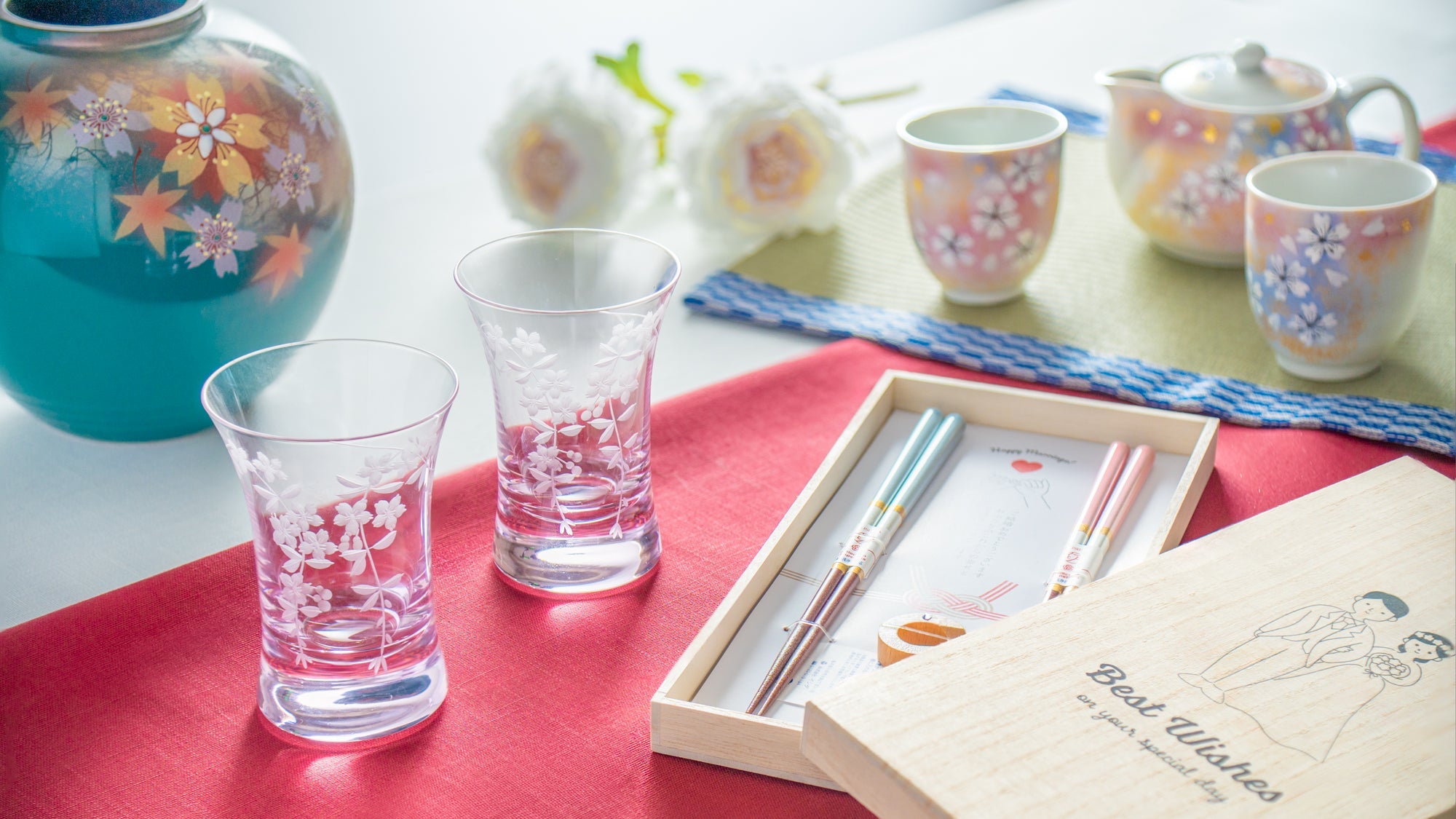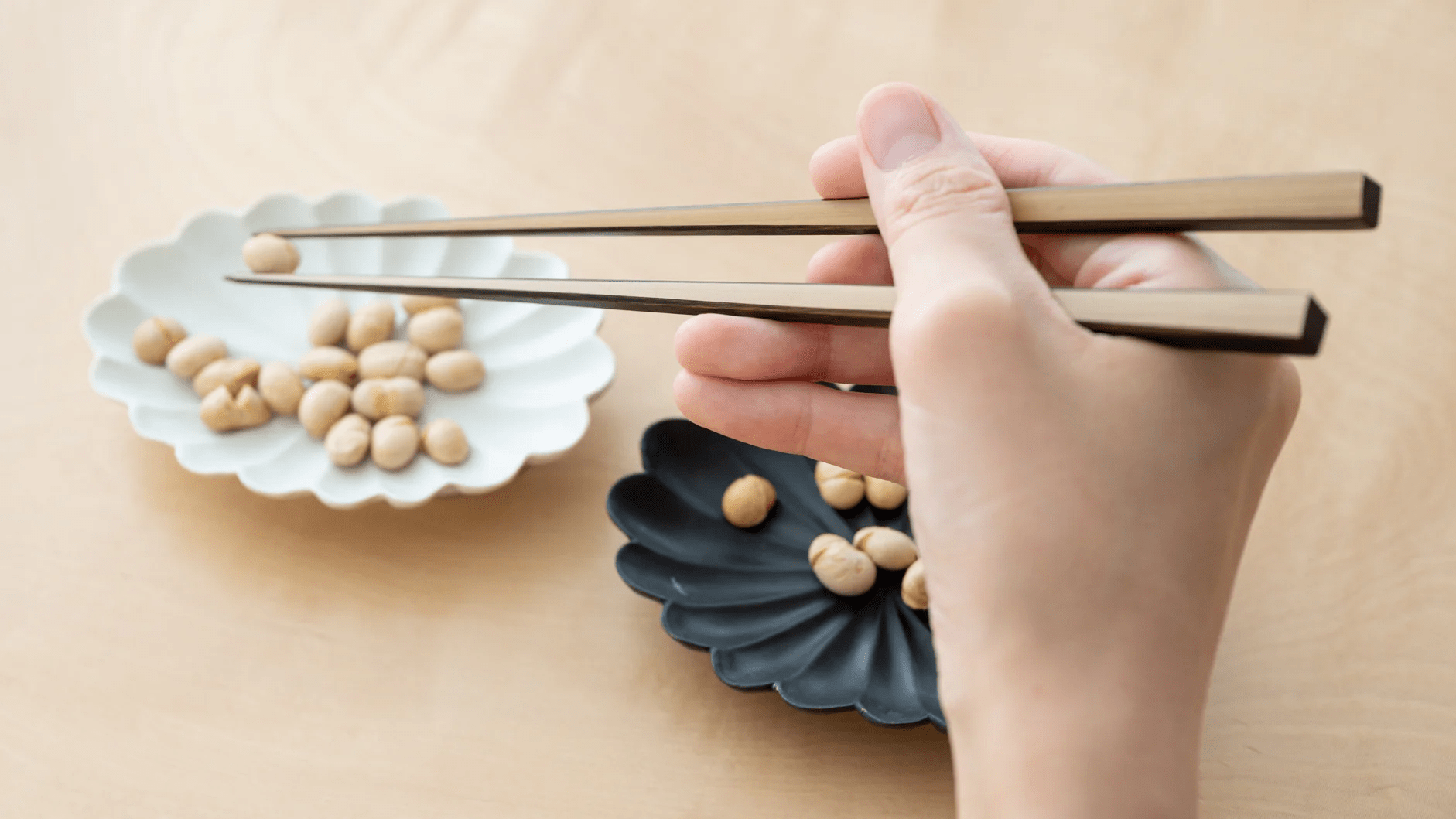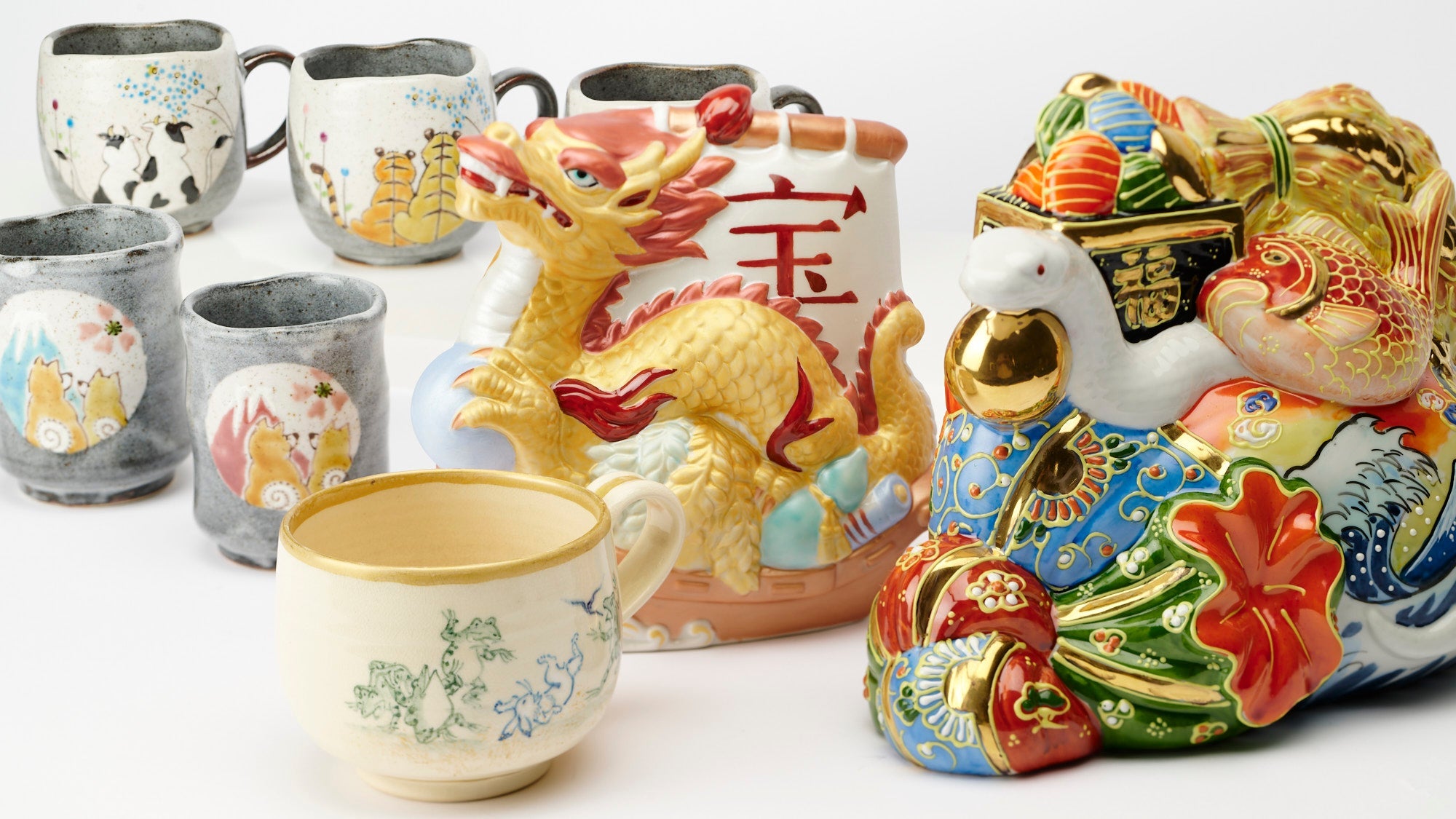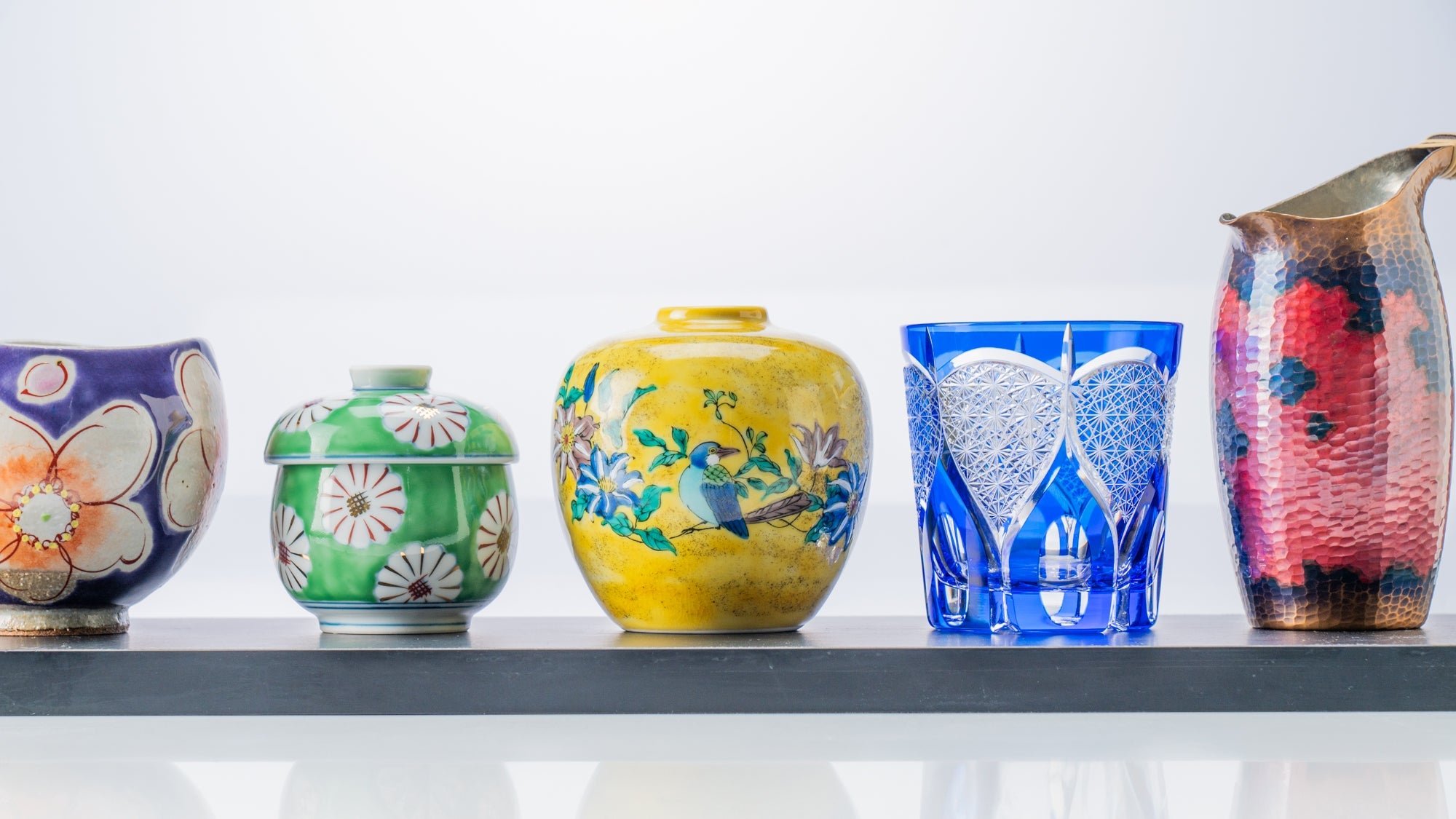
Meeting the Master of Raised Maki-e: Where Gold and Artistry Shine as Wajima Lacquerware
Written by Team MUSUBI
In this interview, we explore the exquisite craft of taka maki-e, or "raised maki-e," as practiced by the renowned lacquer artist Yamanoshita Akihiro. Raised maki-e is one of the most demanding techniques in Wajima lacquerware, requiring exceptional skill and patience. Yamanoshita's stunning work highlights his mastery of this intricate method.

Raised maki-e involves applying lacquer in thick layers to create a three-dimensional effect. Patterns are first elevated in relief, followed by sprinkling metal powders like gold or silver and polishing the surface to complete the process. The raised areas are formed using a mixture of lacquer with substances like charcoal powder, silver powder, or polishing powders. This labor-intensive process is then followed by either hira maki-e (flat maki-e) or togidashi maki-e (polished maki-e), requiring both time and tremendous effort. The interplay of the three-dimensional relief, metallic shimmer, and lacquer’s glossy finish produces a distinctive, multidimensional effect—exemplified by Yamanoshita’s beautiful lucky mallet.
It is the maki-e artist who carries out these delicate tasks, using advanced techniques and unwavering focus to craft the intricate, golden shimmering designs that represent the pinnacle of Wajima lacquerware craftsmanship.
tables of contents
The Journey to Becoming a Maki-e Master
Becoming a craftsman in any traditional art is challenging, but the journey of a maki-e artist in Wajima—renowned for producing some of Japan's finest lacquerware—is particularly long and arduous. Yamanoshita Akihiro’s story is no exception. His first encounter with Wajima lacquerware was in middle school, igniting his determination to pursue this craft. He attended Wajima Vocational High School, where he studied lacquer arts, and after graduation, he apprenticed under a master craftsman.

Instead of immediately working on maki-e, his early days were spent on steady, foundational tasks such as kneading lacquer, cutting charcoal, and preparing materials. He also dedicated long hours to practicing brushwork, drawing line after line, and copying his master’s designs. Although the apprenticeship was meant to last four years, Yamanoshita had to leave after three years due to severe knee pain, which made it difficult to sit for extended periods. He later resumed his training under his senior apprentice at around the age of twenty-six, spending another three years in training. Although his physical condition extended his apprenticeship longer than most, he had yet to become fully independent.
"After three more years of training, I spent another three years studying at the Wajima Urushi Art Technical Training Center. Then, I worked at a separate workshop for about seven years before finally attaining independence," Yamanoshita reflects. It took over twenty years of dedication, challenges, and perseverance to finally achieve independence as a craftsman.
Independence Through Art
When asked about the biggest change after gaining independence, Yamanoshita said, "The hardest part was coming up with my own designs and finishing them by a deadline. There were failures, and I often found myself delivering the work at the last minute." Whereas responsibilities were largely shared with his master or the workshop during his apprenticeship, he now had to shoulder everything himself.

"For example, I would rush the polishing after applying the gold powder, only to have it peel off. Controlling the drying process of lacquer was also difficult, as the humidity and temperature needed to be carefully managed. Taking care of everything on my own was quite challenging," he recalls. In the world of traditional crafts, it's not uncommon for a single craftsman to take on too much work, and Yamanoshita was no exception.
"At that time, I was accepting every job that came my way, so I received a wide variety of design requests," he reflects. When asked about a memorable project, he mentioned kawari-nuri. Kawari-nuri refers to lacquerware with decorative patterns, a technique that flourished during the Edo period (1603 CE–1868 CE) and was often used to adorn sword sheaths. It is said that there are hundreds of different methods and names for this technique.

"Creating various patterns with lacquer is always a demanding task. I try to achieve natural, organic patterns that don’t look too contrived, but it’s difficult every time," Yamanoshita explains. While the diverse nature of his work as a maki-e artist brings its own set of trials, he says that the freedom he now enjoys as an independent artist makes it all worthwhile.
"When I was an apprentice, I mostly worked on set patterns, like landscapes or specific floral designs. But now, I get to work on a variety of projects. It’s really fun to be able to paint so many different designs," he says. After years of foundational work, Yamanoshita is finally able to express himself in his own unique way. While he can replicate similar designs, each piece is one-of-a-kind, shaped by the moment it was created. "Even when I paint the same subject repeatedly, there are always subtle differences," he adds.
About Kozuchi
The mallet, kozuchi in Japanese, featured at Musubi Gallery is a testament to Yamanoshita's artistic vision and technical mastery as a maki-e artist. In Wajima lacquerware, the kozuchi holds special significance. It is often used in celebratory occasions such as weddings, and its creation requires significant time and effort to honor its ceremonial importance. The production process takes about two to three months. Due to its three-dimensional nature, crafted using raised maki-e techniques, the process involves repeatedly painting a section and allowing it to dry before moving on, making it a labor-intensive work.

When asked about the maki-e process, Yamanoshita explained: "First, I draw the design, and then I begin the work. There are different approaches, for example, in raised maki-e, you can start by raising the pine tree part first, then paint the water and the ground around it. Or, you can finish the flat areas with gold powder first and then give height to the pine tree."

The iconic design of pine trees and waves is a traditional motif in Wajima lacquerware, known as "Matsushima maki-e." It depicts a landscape of pine trees growing on islands with the sea visible in the background. The beauty of maki-e lies in the way it uses variations of gold to create depth and bring the design to life. The distant islands and the large pine tree in the foreground showcase the full range of maki-e techniques, which is why this motif has been used in lacquerware for centuries.

"In this piece, I use various types of gold. I hope people will enjoy the subtle differences in color. I’ve also incorporated different techniques, applying gold thinly in some areas and more heavily in others, always balancing the landscape depicted in gold," he adds.
This particular kozuchi survived the devastating earthquake that struck the Noto Peninsula on January 1st of this year, remaining intact through the disaster. Having been carefully kept by Yamanoshita himself, the lacquer has developed a rich luster over time. Refined over time through the hands of a masterful maki-e artist and the natural aging process, this kozuchi has evolved into a true masterpiece, destined to be passed down through generations, its dignified presence continuing to captivate us.
Interestingly, Yamanoshita also crafted the pen presented to President Biden and his wife by former Prime Minister Kishida during his visit to the White House.
"It was a piece I made after the earthquake. I gathered whatever remaining gold powder and materials I could find amidst the chaos. In that sense, it became a truly symbolic work for me, something I’ll never forget," he says.

Throughout the interview, Yamanoshita spoke calmly and with few words, but he was resolute about his belief in the importance of "freedom" in his creative process. When asked why he chose to become a maki-e artist, he said it was because of that very freedom. In a life filled with the hardships of a craftsman's journey, those who manage to find their own sense of freedom may indeed be rare. Looking at the majestic bald eagle of the United States and the phoenix of Japan soaring across the lacquered surface of the pen, one is reminded of Yamanoshita's pursuit of freedom in his craft.







Leave a comment
This site is protected by hCaptcha and the hCaptcha Privacy Policy and Terms of Service apply.